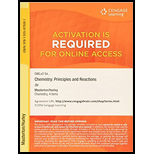
Concept explainers
(a)
Interpretation:
The difference between linear and branched polyethylene needs to be explained.
Concept Introduction:
A polymer is a long chain molecule made of large number of monomer units. The monomer is repeating units of a polymer that are linked to each other to produce a molecule of polymer.
These monomer units are linked to each other either through the formation of peptide linkage or glycosidic linkage or by removal of any moiety such as a water molecule.
Polyvinyl chloride, Bakelite and polystyrene are some of the example of
(b)
Interpretation:
The difference between glucose and fructose needs to be explained.
Concept Introduction:
Glucose and fructose are monosaccharideswith molecular formula C6H12O6. Glucose is also known as aldohexose consisting of 6 carbon atom and an
On the other hand, fructose is a ketohexose consisting 6 carbon atoms and a
(c)
Interpretation:
The difference between maltose and sucrose needs to be explained.
Concept Introduction:
Maltose and sucrose both are disaccharide with molecular formula C12H22O11. Maltose consists of 2 molecules of glucose while sucrose contains 1 molecule of glucose and 1 molecule of fructose in it.
These are disaccharide which consists of carbon, hydrogen and oxygen atoms only.
Want to see the full answer?
Check out a sample textbook solution
Chapter 23 Solutions
Owlv2, 4 Terms (24 Months) Printed Access Card For Masterton/hurley's Chemistry: Principles And Reactions, 8th
 Chemistry: Principles and ReactionsChemistryISBN:9781305079373Author:William L. Masterton, Cecile N. HurleyPublisher:Cengage Learning
Chemistry: Principles and ReactionsChemistryISBN:9781305079373Author:William L. Masterton, Cecile N. HurleyPublisher:Cengage Learning Chemistry: The Molecular ScienceChemistryISBN:9781285199047Author:John W. Moore, Conrad L. StanitskiPublisher:Cengage Learning
Chemistry: The Molecular ScienceChemistryISBN:9781285199047Author:John W. Moore, Conrad L. StanitskiPublisher:Cengage Learning Organic ChemistryChemistryISBN:9781305580350Author:William H. Brown, Brent L. Iverson, Eric Anslyn, Christopher S. FootePublisher:Cengage Learning
Organic ChemistryChemistryISBN:9781305580350Author:William H. Brown, Brent L. Iverson, Eric Anslyn, Christopher S. FootePublisher:Cengage Learning Introductory Chemistry: An Active Learning Approa...ChemistryISBN:9781305079250Author:Mark S. Cracolice, Ed PetersPublisher:Cengage Learning
Introductory Chemistry: An Active Learning Approa...ChemistryISBN:9781305079250Author:Mark S. Cracolice, Ed PetersPublisher:Cengage Learning Principles of Modern ChemistryChemistryISBN:9781305079113Author:David W. Oxtoby, H. Pat Gillis, Laurie J. ButlerPublisher:Cengage Learning
Principles of Modern ChemistryChemistryISBN:9781305079113Author:David W. Oxtoby, H. Pat Gillis, Laurie J. ButlerPublisher:Cengage Learning Chemistry & Chemical ReactivityChemistryISBN:9781133949640Author:John C. Kotz, Paul M. Treichel, John Townsend, David TreichelPublisher:Cengage Learning
Chemistry & Chemical ReactivityChemistryISBN:9781133949640Author:John C. Kotz, Paul M. Treichel, John Townsend, David TreichelPublisher:Cengage Learning





